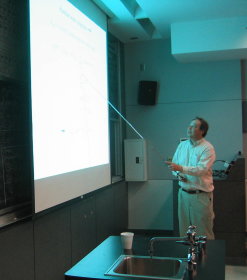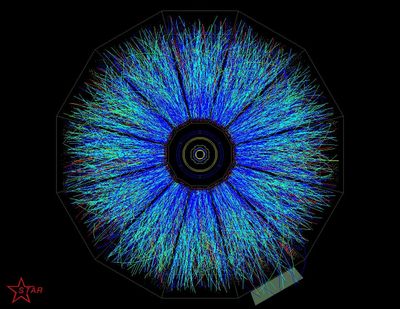 Not many Mondays ago we had a colloquium entitled “Quantum Chaos and the Foundations of Statistical Mechanics”, by Mark Srednicki, of UCSB.
Not many Mondays ago we had a colloquium entitled “Quantum Chaos and the Foundations of Statistical Mechanics”, by Mark Srednicki, of UCSB.
This was a double treat for me, since I’ve known Mark since my days in Santa Barbara, and remember many happy lunchtimes sitting at lunch with him overlooking the lagoon talking about everything from physics to Bablyon 5. That was during those truly amazing days of being a postdoc in string theory at the time when D-brane technology was turning the field upside down, and a lot of the torque needed for this was being generated right there in Santa Barbara, sometimes in lunchtime conversations. I was reminiscing about those days just a week before in Cambridge, having run into Karl Landsteiner and Roberto Emparan, two other postdocs from those fantastic times. The reason for us all being in Cambridge was to attend the Andrew Chamblin memorial conference, which I told you about in an earlier post. Andrew was also a postdoc there, around the same time as us, and we rapidly forged the good friendships that you’ve read about in a number of earlier posts linked from the previous link.
Mark used to tell me a bit about Quantum Chaos back then too, and I found it interesting, but always wanted to hear the story laid out properly, and to hear what he […] Click to continue reading this post →





